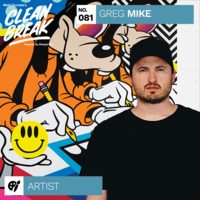Your art
portfolio
- by Always Art Staff


Your art portfolio is one of the most important documents that reflects your journey as an artist, your accomplishments, and what distinguishes you from others. It is what introduces you to galleries, corporate clients, and any sort of prospect that is interested in knowing more about you. You want to give a strong impression by making sure you are building a professional-looking portfolio. Here’s how.
Your strongest work
Only display your best work. It is natural that artists’ work gets better over time with practice, but you still need to ensure that what you put on your portfolio speaks to your dedication, effort, and skills. It is better to list fewer great-quality works than many works that have inconsistent quality. Not every piece you produce will make the cut. Don’t feel bad about this, but instead recognize it as part of the learning process.
High quality photos
Every photograph of your work should be high quality. This step is as important as the creation of the artwork itself. Whereas you can physically assess the quality of the work live when it is front of you, the reviewer only has the photos you provide to form their opinions. Therefore, the photographs need to depict the quality of the original creation as best as possible.
Format
Your website is your first portfolio location. Keep it clean and simple. List your selected artworks along with their info: title, year of completion, medium, and dimensions. As part of your about page, biography, and artist statement to present your artist journey to the world. Make it genuine and thoughtful. Additionally, list any awards, accomplishments, recognitions, press releases, and testimonials to add to your credibility and story. Save your full portfolio as a PDF file, incorporating the written and photographic materials on your website so you can easily distribute the full document when needed.
Organization
Your portfolio is a document that needs to look visually composed and well-structured. The sections should be organized in a logical order. For instance, you can start with your biography and artist statement, followed by your artwork, and achievements along with the other details. The type of work that you list also requires consideration. Accentuate your signature style and show your creative capacity to develop unique variations.
Review
After you have completed your document, get opinions, thoughts, and feedback. You can ask your artist friends to review it, or any art world professional who you have a solid relationship with. You need objective critique; the reviewer should describe what impression your portfolio gives about you and if it matches your reality. The reviewer might also pay attention to elements you missed or direct you to add interesting things to your narrative.




